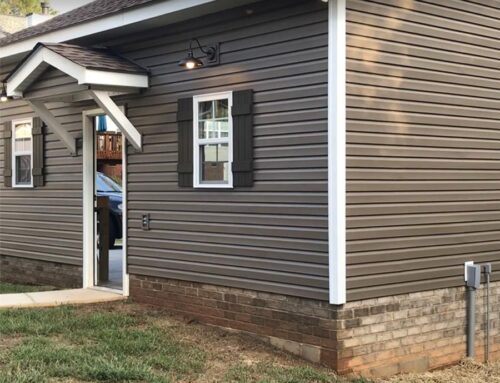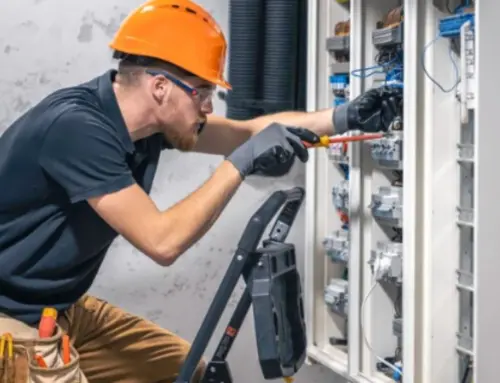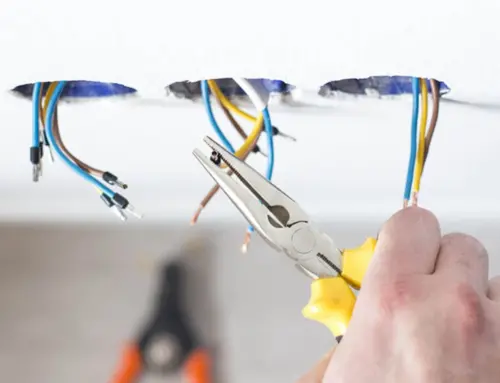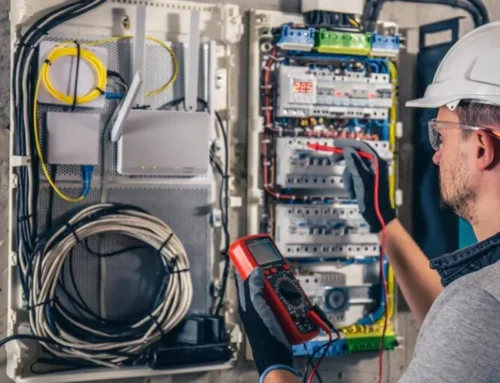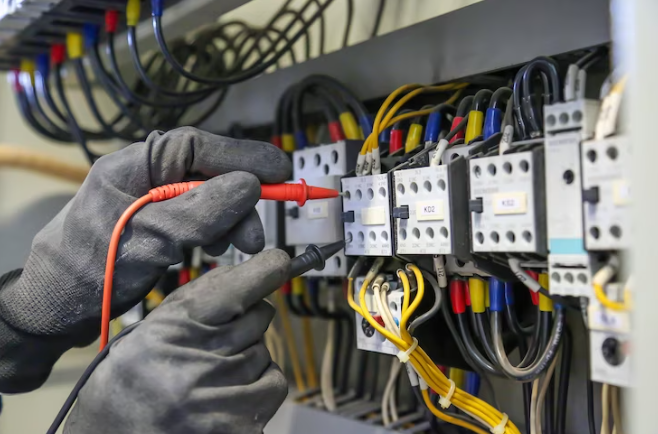 Indoor air quality is a subject of increasing importance, especially as our spaces become more energy-efficient and, as a result, more sealed off from the external environment. The quality of the air we breathe inside our homes, offices, and public buildings can significantly affect our health, productivity, and overall well-being.
Indoor air quality is a subject of increasing importance, especially as our spaces become more energy-efficient and, as a result, more sealed off from the external environment. The quality of the air we breathe inside our homes, offices, and public buildings can significantly affect our health, productivity, and overall well-being.
Let’s delve deeper into the relationship between the two and explore some key considerations.
Understanding Indoor Air Pollutants
First, we must understand what constitutes indoor air pollutants. These can range from particles like dust and pollen to volatile organic compounds (VOCs) emitted from products such as paints, cleaning agents, and even some electronics.
Mold, bacteria, and viruses can also degrade indoor air quality. While electrical systems themselves might not be direct sources of pollutants, the way they interact with other components of a building can either mitigate or exacerbate the problem.
The Role of Air Purifiers
Air purifiers, another crucial product of electrical engineering, have risen in popularity as concerns over air quality grow. These devices use various methods, such as HEPA filters, activated carbon, or UV light, to remove or neutralize indoor air pollutants.
When functioning correctly, they can dramatically improve indoor air quality, especially in spaces where natural ventilation is limited. However, it’s vital to remember that while purifiers can help, they should complement, not replace, good ventilation.
Energy Efficiency and Air Tightness
With the push towards energy efficiency, many modern buildings are designed to be airtight. While this helps conserve energy by preventing heat loss, it can inadvertently trap pollutants inside. Electrical systems come into play here too.
For instance, smart home systems can be programmed to monitor indoor air quality and adjust ventilation rates or activate air purifiers when pollutant levels rise. This interplay between energy conservation and air quality underscores the importance of holistic building design where electrical, mechanical, and architectural considerations all work in tandem.
The Silent Polluter: Ozone Emissions
While most electrical appliances are designed with user safety in mind, some can unintentionally degrade indoor air quality. A classic example is certain types of air purifiers that emit ozone—a respiratory irritant.
Ozone can react with other indoor chemicals, producing harmful by-products. Hence, when choosing electrical appliances, especially those that influence air quality, it’s essential to ensure they adhere to relevant safety standards and don’t contribute to indoor pollution.
Future Trends: Smart Systems and Improved Air Quality
As technology continues to evolve, we can expect electrical systems to play an even more significant role in ensuring pristine indoor air quality. Innovations in sensor technology can lead to more accurate real-time monitoring of pollutants.
Integrating these sensors with smart home systems can facilitate automatic responses, such as adjusting ventilation rates or activating air purifiers, ensuring occupants always have access to clean air without manual intervention.
While electrical systems might not be the first thing that comes to mind when discussing indoor air quality, their impact is undeniable. From powering ventilation systems to running air purifiers, the influence of electrical systems on the air we breathe indoors is vast and multifaceted. As we continue to spend a significant portion of our lives indoors, ensuring a harmonious relationship between electrical systems and air quality will be paramount for our health and comfort.
At Starnes Electric LLC, we embrace this intricacy, sculpting electrical systems that not only power homes but also enhance the very air that breathes life into our indoor spaces. Our endeavors are meticulously crafted, intertwining electrical expertise with a keen understanding of indoor environmental quality, to sculpt living spaces that are not merely habitats but holistic environments, nurturing us with every breath we take.
Navigating Through the Nuances: Electrical Systems Intersecting with Indoor Air Quality
Indoor air quality, a subtle and often overlooked aspect of our living and working spaces, gets intricately intertwined with the electrical systems we implement. In our quest at Starnes Electric LLC, to deepen the understanding of this relationship, we uncover layers of interactions that mould our indoor experiences and the air we breathe. Let’s dive into these nuanced aspects, exploring and elucidating some of your pressing questions.
Electrical Equipment and Off-Gassing
Electrical equipment, especially when new, can emit volatile organic compounds (VOCs) in a process known as off-gassing. Materials like plastics, insulation, and certain electronic components can release these compounds into the air.
Over time, off-gassing can contribute to indoor air pollution, potentially leading to health issues such as respiratory problems, headaches, or allergic reactions. It’s crucial to be aware of the off-gassing potential of electrical equipment and, if possible, choose products that have low or no VOC emissions.
Proper Ventilation for Electrical Spaces
Ensuring proper ventilation in spaces housing electrical equipment helps dissipate heat and any potential off-gassed pollutants. Good airflow prevents the buildup of harmful compounds and reduces the risk of equipment overheating, which can compromise performance and lifespan. In addition, ventilation can help reduce the risk of moisture accumulation, preventing corrosion and electrical shorts.
Maintenance of HVAC Systems
Routine maintenance of HVAC (Heating, Ventilation, and Air Conditioning) systems is crucial for maintaining optimal indoor air quality. Over time, HVAC systems can accumulate dust, mold, and other contaminants, which can be circulated throughout the building.
Regular cleaning, filter replacements, and system checks ensure the system operates efficiently, provides fresh air, and adequately filters out pollutants, ensuring a healthier indoor environment.
Electrostatic Precipitators and Air Purification
Electrostatic precipitators are devices used in air purification. They work by generating an electrical charge to attract and capture airborne particles. As air flows through the device, pollutants are electrically charged and then collected on a series of plates.
These devices can be effective in removing particles like dust, smoke, and pollen from the air. However, they require regular cleaning to remain effective and, in some cases, can produce ozone, a potential respiratory irritant.
Proper Wiring and Electrical Safety
Proper wiring is foundational for electrical safety. Faulty or substandard wiring can lead to short circuits, fires, or electric shocks. Ensuring that wiring is up to code, using the right wire gauges for specific applications, and regularly inspecting for signs of wear or damage can prevent many electrical hazards. Proper grounding and the use of circuit breakers further enhance safety, protecting both people and equipment from potential electrical malfunctions.
Lighting Choices and Indoor Air Quality
The type of lighting used can influence indoor air quality. Incandescent bulbs produce more heat, potentially affecting HVAC efficiency, while some energy-saving bulbs may release trace amounts of mercury when broken. LEDs, on the other hand, are energy-efficient, produce minimal heat, and don’t contain harmful chemicals.
The choice of lighting not only affects energy consumption but can indirectly impact the indoor environment by influencing temperature, pollutant levels, and even the potential release of harmful compounds.
Our explorations and implementations do not merely seek compliance with standards but strive towards a future where our electrical systems coexist and indeed, augment the purity and vitality of our indoor environments. The endeavor is not just to illuminate and power our spaces but to do so in a manner that breathes wellness into every nook and cranny.
Contact Us Today!
At Starnes Electric LLC, we believe that our electrical decisions have a profound impact beyond just the functionality of our spaces. We take a holistic approach to our work, recognizing the interconnectedness of every wire, system, and device and the influence they have on the quality of our indoor air.
If you’re experiencing any electrical issues, don’t hesitate to reach out to us – we’re here to help!

